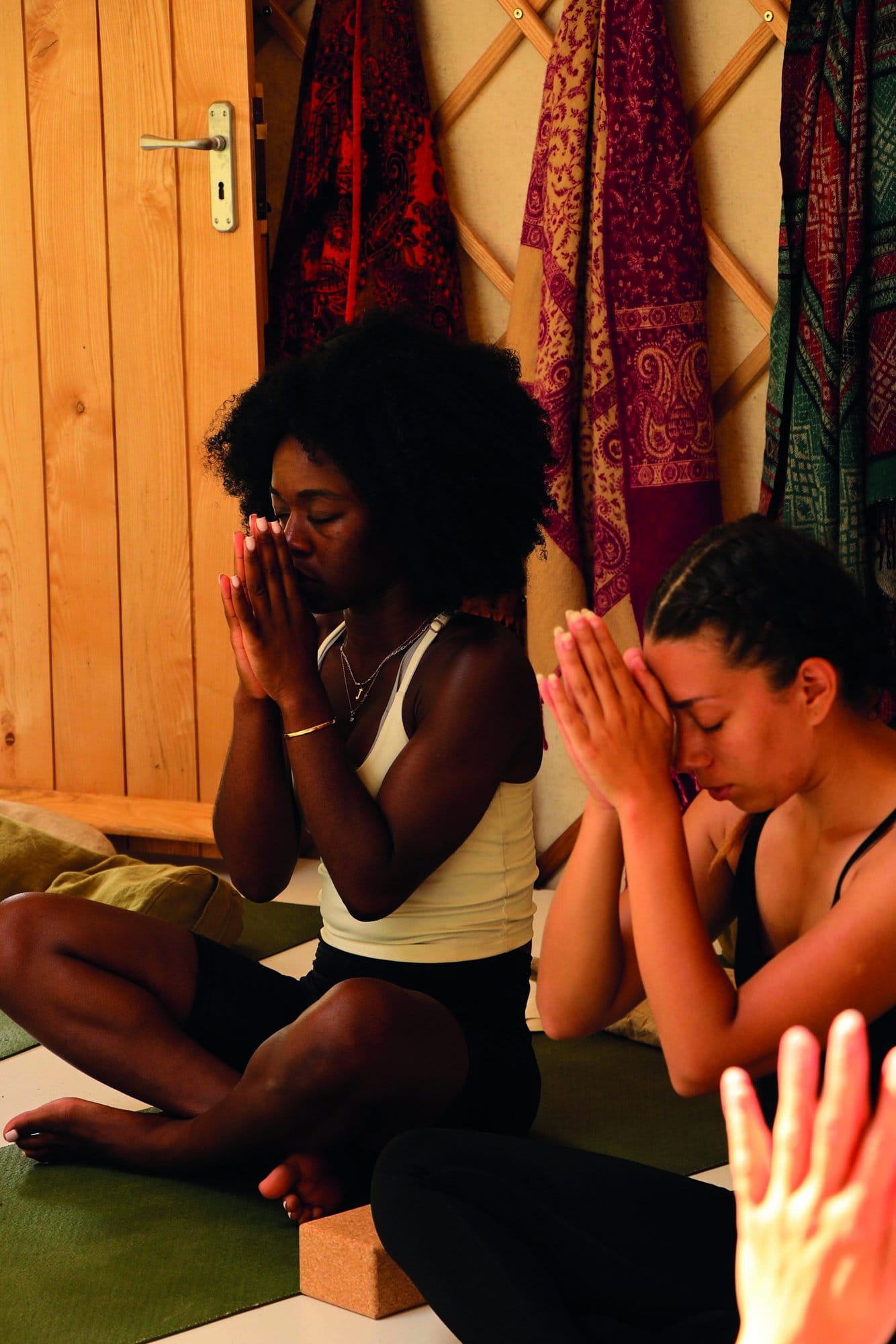
Stress be gone
4 yoga practices for lowering stress levels. By Olivia Palmer-Creigg
An ancient yogic text called The Yoga Sutras was created by Patanjali to guide yogis to achieve self-realisation and freedom through controlling the body and restraining the mind from external stimuli.
Self-restraint from external stimuli has been taken to a whole new level in the society that we live in now. Wherever we go, we are bombarded with external stressors which affect our bodies and minds constantly, whether we realise it or not. As soon as we rise, many people tune into the news, listen to the radio, read the newspaper, then scroll on social media mindlessly.
Everything that we are exposed to, we take in, in some way. All that we see and observe is being integrated within us. This often leads to disruption within our internal bodies…and this disruption unfortunately often leads to stress, even if on a micro level, manifesting in different ways for different people.
Fatigue, anxiety, tightness within the body, sleeping problems, and eating problems to name a few are all examples of manifested stressors within our internal bodies, many of which have increased especially globally since Covid-19.
From Statista, in the UK in 2019, £14.9 billion was the overall healthcare expenditure due to stress-related illnesses. In 2021, the main causes of stress were lack of sleep and financial worries among UK adults.
Yoga is a great tool to combat stress and the western world is starting to catch up on this.
Traditionally, the western model focuses on the symptoms of people and what is going wrong. Whereas yoga assists people with healthy strategies which can decrease their susceptibility to any stressors in the first place. In other words, we look at the root, rather than just dealing with the symptoms.
The practice of yoga involves asanas (physical postures), breathing exercises, and spiritual contemplation. As yoga continues to grow in popularity, people who regularly practice notice an improvement in their physical and psychological wellbeing. The next time that you notice yourself feeling symptoms of stress, start to incorporate some of these practices regularly to feel a greater sense of ease.
1. BALASANA (CHILD’S POSE)
Balasana is a restful posture that quiets the mind. As you rest the top half of your body on the bottom half, it allows you to tune into your inner environment as well as activate the nervous system. It also activates the breathing process by opening up your chest allowing you to go deeper into your breath cycle. This is necessary as our breath is one of the first things affected when we are in moments of stress.
HOW TO: Start by kneeling on the ground with bent legs. Keep your knees together or bring each knee towards the corners of your mat (for a wide-legged Balasana). Draw your buttocks back towards your heels. Lengthen through the spine and lengthen your arms out in front of you. You can rest your forehead on a yoga block and bring a cushion between the backs of your legs for additional support. Stay for a minimum of 10 deep breaths.
2. VIPARITA KARANI (LEGS UP THE WALL POSE)
By allowing your feet to come above your heart, this pose will instantly cool down your body. By activating the relaxation response within the parasympathetic nervous system and deactivating the stress response in your sympathetic nervous system, this pose boosts your blood circulation and regulates your moods.
HOW TO: Sit on the floor with your right hip as close to the wall as possible. Roll onto your back and bring your legs up the wall. Your back does not need to come directly onto the wall but lengthen through your spine as much as possible.
Release any tension from your shoulders and allow your hands to settle where they feel most comfortable. To make the pose even more delicious, you can bring an eye pillow over your eyes. If you have lower back pain, roll up a blanket and bring it underneath your back for additional support. Stay in the pose for up to 10 minutes breathing deep and supportive breaths.

3. PARIVRTTA SUKHASANA (SEATED TWIST)
Most seated twists help to open through the chest and back. These openings within the body are key as an antidote to stress as a lot of us breathe from our chests and not from our bellies. If you look at a baby breathing, you will notice its belly going up and down. Compare this to most adults and you will notice that they breathe from their chests. It has been said in many Indian and Chinese cultures that your nose is for breathing and your mouth is to eat. We often forget this, especially when we are stressed!
HOW TO: Sit in a cross-legged position, lengthening through the spine and connecting your sitting bones to the earth beneath you. If this is not comfortable, bring a cushion or a yoga block underneath to sit on. Bring your left hand to your right knee and place your right fingertips on the mat behind you. Inhale and sit up tall, exhale and twist from the base of your spine over to the right side. As you settle in towards the twist, bring your attention two inches below your belly button and take five deep, regimented breaths on each side. This will allow you to rest more in your sympathetic nervous system. Repeat on the other side.
4. NADI SHODHANA PRANAYAMA (ALTERNATE NOSTRIL BREATHING)
When someone is stressed, we have all heard the saying: “Take a moment to catch your breath.” This is exactly what this breathing practice will do! Nadi Shodhana translates to ‘subtle energy clearing’ and it balances the left and right hemispheres of the brain, leaving our nervous system rejuvenated. When we are stressed, our breath, or ‘nadi’ energy centres, become blocked.
As you focus on breathing through each nostril individually, you allow them to rebalance back to their optimal functioning. Breathing through the left nostril targets the right side of the brain promoting relaxation, and breathing through your right nostril targets the left side, increasing energy. In a 2018 study (National Institutes of Health), women had lower perceived levels of stress, after three months of regularly doing this breathing exercise for 30 minutes a day.
HOW TO: Sit comfortably in a crossed legged position. Exhale completely first and use any finger on your dominant hand to close your right nostril and inhale through your left nostril. Then close the left nostril with your fingers. Open the right nostril and exhale through this side. Inhale through the right nostril and then close this nostril. Open the left nostril and exhale through the left side. Repeat for up to five minutes.
The main philosophy that yoga adopts is how inextricably connected the mind and body are. Stress affects every area of our lives, and although we cannot rid ourselves of these external stressors, we can learn to manage them better through the simple postures, breathing and awareness practices that yoga gives us. Yoga: the perfect antidote to stress.
Olivia Palmer-Creigg is a yoga teacher based just outside of London. She specialises in helping women improve their wellbeing holistically through women’s retreats and one to ones. Find her on Instagram @oliviaannaliseyoga_ or visit: oliviaannaliseyoga.com




